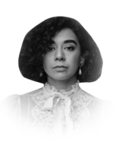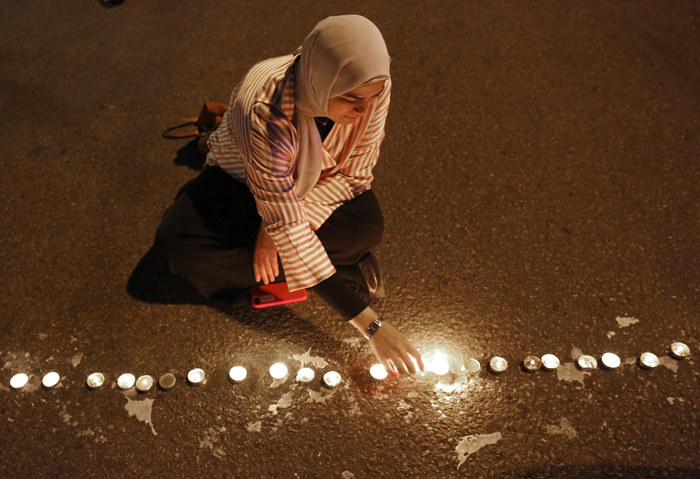Protests against the governments in Lebanon and Iraq are bringing people from across the generational, gender, religious and political divides to the streets. With little to lose, they are armed with spray cans, paintbrushes and the power of the written word. The outbreak of these revolutions has ignited a creative renaissance, through which people are channeling their frustration over widespread corruption, high unemployment, and an out-of-touch, archaic political class.
In addition to being an expressive medium, creative resistance in the Lebanese and Iraqi revolutions should also be understood as a weapon that protesters are using to reclaim their national identity and cultural heritage and set out their vision for a brighter future, all of which have traditionally been superimposed by the state. Through visual, musical, poetic, digital and performance art, protesters are not just demanding that their economic systems and political institutions be released from the shackles of a failed leadership, they are also reasserting their right to redefine their respective cultural and national identities.
A powerful example of this creative resistance is visible in the anti-establishment nature of street art in Beirut. Parking meters around Beirut can be found wrapped in black plastic bags; on them, signs read “parking is free, today and tomorrow” — an act of defiance against the state’s overbearing thirst for taxes and fees. Dark, brutish caricatures of Walid Jumblatt, Michel Aoun and other members of Lebanon’s political class are graffitied against a background of dollar signs or stenciled statements that translate to “Down with the system.” By covering the walls of glitzy downtown Beirut buildings with mocking images of what is believed to be an inept and failed leadership, revolutionary creatives are making an undeniably subversive political commentary against the kleptocracy and corruption that are plaguing Lebanon.
In addition to questioning authority and calling out corruption, Lebanese protesters are using art to articulate their vision for a brighter future. “Art of Thawra,” an Instagram page that was created soon after the protests broke out in the late hours of Oct. 17, consists of a curated collection of artwork inspired and produced by the revolution. In one photo, Beirut’s iconic, bullet-riddled Martyrs’ Square statue rests upon a rock plateau above the dancing flickers of a blazing fire as it holds up the Lebanese flag. The damage done to the statue during Lebanon’s civil war — still visible post-restoration — was intended to serve as a forewarning against repetition. The imagery, compounded by the artist’s choice of statue, evokes a message of hope and freedom, which Thawra represents. These creatives are painting their Lebanon using a variety of mediums, from animations to graffiti, oil paintings and graphic design. In doing so, they are repeatedly and vehemently rejecting the version of the country that the regime propagates.
Through creative expression, Iraqis are taking charge of their own narrative and history, both of which had been captured by sectarian violence, political decay and foreign interference for nearly two decades.
Lama Aljarallah
In Baghdad, protesters have taken to the street to paint their frustrations on the bullet-scarred walls in and around Tahrir Square. The city’s Saadoun Tunnel, which leads to Tahrir Square, has been transformed into a revolutionary art gallery. More specifically, several of these street murals and graffitied poems are being used to honor the revolution’s unofficial heroes: Women, youths, martyrs, and tuk-tuk drivers.
Iraq’s tuk-tuk drivers are idolized in several artworks due to their valuable contribution to the revolution, as unofficial ambulances and mortuary vans. In one of the murals, a tuk-tuk driver is seen wearing a Superman cape as he enters his vehicle, with the words above reading: “Ambulance of liberation.” Another depicts an ashy silhouette of a tuk-tuk being driven through a cloud of fiery grey smoke while carrying a protester on the back seat. The writing states: “Our tuk-tuks are among the flames, our tuk-tuks carry us, they are worth more than America and all of Iran.”
As a form of expression, art has the ability to shape or reinforce the way we experience events and remember them. Through creative expression, Iraqis are taking charge of their own narrative and history, both of which had been captured by sectarian violence, political decay and foreign interference for nearly two decades.
The artwork in the tunnel also conveys messages of hope and defiance against the foreign powers that are believed to have exacerbated and even induced Iraq’s economic and political decay. One particularly colorful and powerfully symbolic mural personifies these foreign powers — namely Israel, Iran and the US — as an imposing monster, holding a weapon that is being pointed at rows of protesters. Iraq’s revolutionary creatives are echoing and visualizing the cries of the streets through their work. They are demanding their country be reclaimed from the irons of the regime and its various, often conflicting, foreign sponsors.
Art has long played a role in contemporary political activism, and the use of creative dissent in Lebanon and Iraq is another such instance, whereby protesters are using a ubiquitously powerful language to articulate their demands and visions. These revolutionary creatives use a combination of themes, cultural iconography and modern artistic styles to honor their reawakened sense of freedom, self-expression and collective identity. Where neither violence nor verbal discussions can satisfy one’s expressive needs during times of sociopolitical upheaval, art steps in as the most effective way to communicate.
Creative dissent is intimate yet widely communicable, it carries loud political messages yet remains the quietest form of protest, and it is both direct yet adaptable and abstract in form. By making art that engages in critical discussions about politics, religion, culture, nationalism and identity, Lebanese and Iraqi revolutionary creatives are questioning the state’s cultural policy while conceptualizing ways in which they can use their reawakened cultural conscience to transform society for the better.
• Lama Aljarallah is a Beirut-based researcher who focuses on the MENA region’s political economy and social movements. She has contributed to research for institutes such as Georgetown University’s Berkley Center for Religion, Peace, and World Affairs, the World Bank, the Middle East Institute, and the Carnegie Middle East Center.












